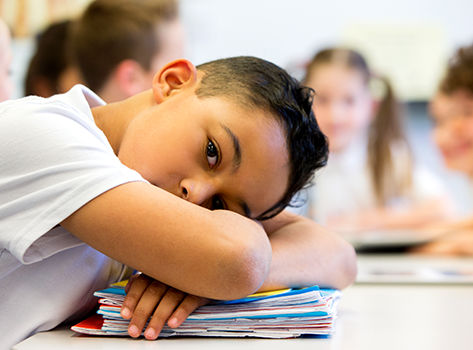
by Adam Silberman, MD
Child and Adolescent Psychiatrist
Atlantic Health System
The overwhelming cause of most symptoms in child and adolescent psychiatry is anxiety. But this is often overlooked or misconstrued. That’s because when clinicians focus on treating symptoms and not causes, we inevitably play whack-a-mole, knocking down one symptom with one medication or therapy, only to have a different symptom pop up elsewhere.
For example, a parent visits a doctor, says, ‘my 13-year-old son punched a hole in the wall, and all I said was do your homework.’ Inevitably, that child is put on a medication for punching holes in walls. Or maybe a parent comes in saying, ‘my child can’t seem to focus on math. They’re distractable and their grades are declining.’ After an evaluation, that child might be diagnosed as inattentive and prescribed a stimulant for ADHD.
I can’t tell you the number of children and adolescents I’ve seen on strong antipsychotic medications that target aggression or bipolar disorder. And unless someone takes the time to understand the root cause of the child’s behavior, that child will often receive an inaccurate diagnosis that will stay with them for life.
Finding the Right Diagnosis
Instead, what if we understood that this 13-year-old was feeling like he was not a good enough student and unless he got a perfect score on a test, he’d be a disappointment? What if that inattentive child was struggling with their sense of self and where they fit in socially or scholastically?
Is the problem really aggression or attention issues, or could it be anxiety and sense-of-self issues instead? I know one thing for sure. These kids are likely to end up on the whack-a-mole train of stimulants, which frequently worsens anxiety.
Finding the Right Child Psychiatry Experts
In our treatment-focused culture, it’s understandable how we got here. But let me arm you with a different idea of what gets in the way of your child’s well-being.
There is only one thing that humans will trade for happiness. They will trade this one thing indefinitely until they have it, I promise. That one thing is safety or predictability. When we don’t feel safe or we don’t feel that the world is predictable, we work to make it so. We kick into overplanning. We experience anticipatory anxiety. We white-knuckle our way through life.
Throughout childhood and adolescence, we have a burgeoning sense of self. Our ideas about who and what we are, and how we can rely on ourselves when there are bumps in the road, is what allows us to feel durably safe. We call this type of mental calmness, equanimity, which means that no matter how high the waves are, your boat stays nice and even. And, it turns out, this equanimity is dependent on your feelings of selfhood and self-compassion.
Finding Compassion for Ourselves in a Complex World
Whatever kind of therapy is used, we can reduce it to this: we have very little control over our world, and we have way more control over our experience of the world. This is the only true durable equanimity — a shelter from the need to white-knuckle life.
In the face of increasing pressures, expectations and judgments, which come with fewer real-life connections and more potshots on social media, kids are struggling to find themselves. So, my wish for parents is to be curious about your child’s internal experience when you see symptoms emerge. A repeating stomachache on school days might be, well, a stomachache. But, so often it’s something more.
Even when we’re trying to protect ourselves from uncertainty, our anxiety is revealed through our behavior and symptoms. So, don’t be fooled by what’s on the surface; stay curious about the internal experience that might be obscured.
Be Proactive About Your Health
To stay safe and healthy, it's good to have a primary care provider who knows and understands your health history and wellness goals.